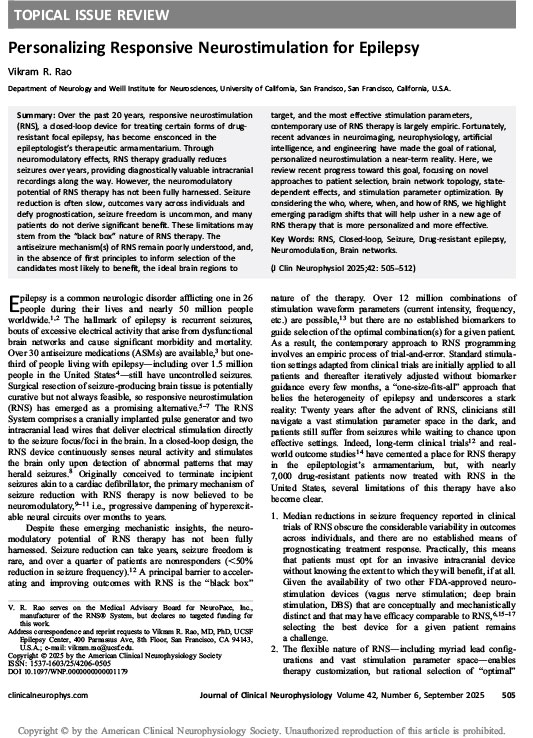Personalizing Responsive Neurostimulation for Epilepsy
September 2025 | Journal of Clinical Neurophysiology
Abstract
Summary:
Over the past 20 years, responsive neurostimulation (RNS), a closed-loop device for treating certain forms of drug-resistant focal epilepsy, has become ensconced in the epileptologist's therapeutic armamentarium. Through neuromodulatory effects, RNS therapy gradually reduces seizures over years, providing diagnostically valuable intracranial recordings along the way. However, the neuromodulatory potential of RNS therapy has not been fully harnessed. Seizure reduction is often slow, outcomes vary across individuals and defy prognostication, seizure freedom is uncommon, and many patients do not derive significant benefit. These limitations may stem from the “black box” nature of RNS therapy. The antiseizure mechanism(s) of RNS remain poorly understood, and, in the absence of first principles to inform selection of the candidates most likely to benefit, the ideal brain regions to target, and the most effective stimulation parameters, contemporary use of RNS therapy is largely empiric. Fortunately, recent advances in neuroimaging, neurophysiology, artificial intelligence, and engineering have made the goal of rational, personalized neurostimulation a near-term reality. Here, we review recent progress toward this goal, focusing on novel approaches to patient selection, brain network topology, state-dependent effects, and stimulation parameter optimization. By considering the who, where, when, and how of RNS, we highlight emerging paradigm shifts that will help usher in a new age of RNS therapy that is more personalized and more effective.

